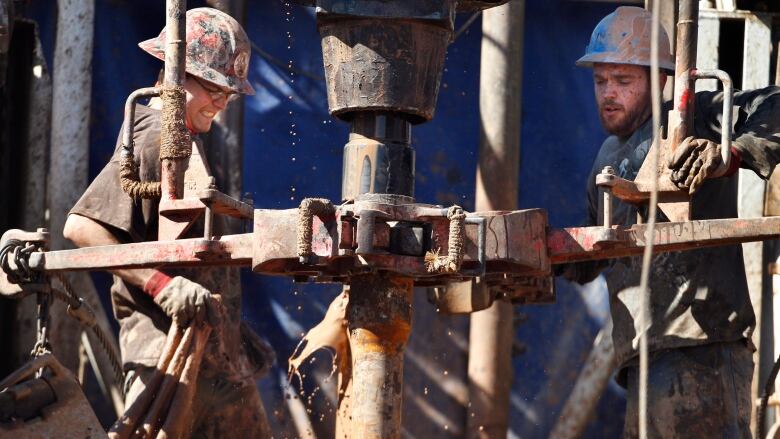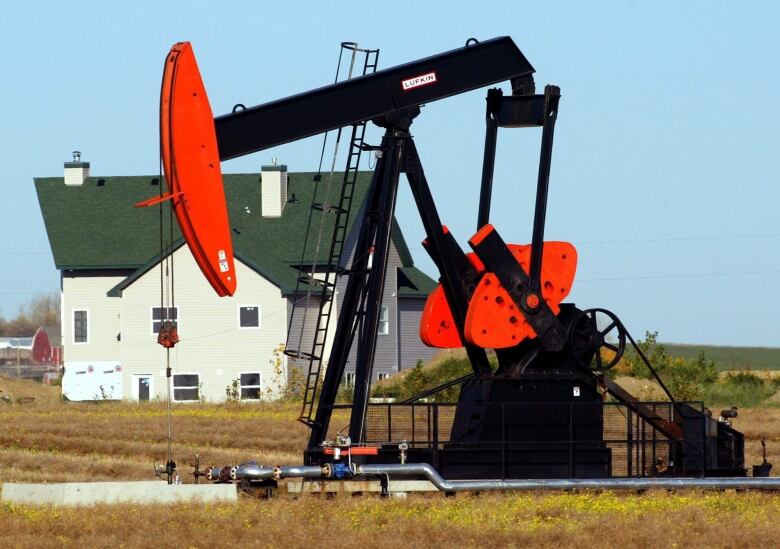Who's afraid of $50 oil? (Answer: Canada's oil industry)
Oil below $50 a barrel could spur another leg down for Canada's oil industry

It may be high summer on the calendar, but Canada's energy companies are already looking towards the coming winter.
What they see is looking worse now than it was even a month ago.
After a rough start to the year that saw companies lay off thousands of workers amid falling crude prices, lower cash flow and wounded share prices, a spring rally in oil was stirring hopes the dreaded other shoe might not drop.
A July-long slide took oil prices back below $50 a barrel, so a rally is looking less likely.
"It's a very difficult time in our industry, one of the most difficult in decades," said Tim McMillan, chief executive of the Canadian Association of Petroleum Producers, the lobby group for the energy industry. "The mantra that I've heard pretty consistently from companies is preparing for lower for longer."
Whether the earlier rounds of staffing cuts and budget reductions are preparation enough to weather what's expected to be a dismal winter drilling season is a question that is already starting to be answered.
In the next few weeks, Canada's oil companies will get down to the serious work of crafting next year's budgets. Those plans will come together in September on the way to getting approved in November.
Winter drilling season
For Canada's oil sector, the winter drilling season, which begins when the ground freezes enough for heavy equipment to move through the northern parts of the country, is where the rubber will hit the road for the industry.
Western Canada's oil business follows a predictable quarterly pattern; busy in the first three months of the year, which is where companies make a lot of their money. Quiet for the next three during spring breakup, when rigs are taken down and moved through the muskeg before the seasonal warmth thaws the ground. And then a ramp-up through the second half of the year, which launches companies back into the peak busyness of winter.
This year that blueprint is being disrupted.
A lack of mid-year activity is to be expected given the drop in oil prices, but what's more concerning at this point is the shape of things to come.
By now, drilling companies and other oilfield services providers should typically be having conversations with exploration companies about the needs of the upcoming season. Uncertainty about commodity prices is making this year different.
"Either they're holding their cards tight to their chest and not letting anyone know what their plans are or they don't know themselves at this point," said Duncan Au, chief executive of CWC Energy Services. "Even now at $50 [oil] we are seeing maybe those plans that were in place are now starting to be put off or put on hold."
The nature of the oil industry means drillers are the first to get hit when a downturn comes and the first to come back when the cycle turns for the better.

Compared to last year at this time, the number of active drilling rigs in Western Canada is down by half. Against this backdrop, many drilling companies have already cut staffing levels by a third.
"Companies are going to have to make some hard decisions and they already have," said Jackie Forrest, a vice-president at ARC Financial, an energy focused private equity firm. "I think we'll be seeing more of those as the year unfolds."
Whether the reductions to date will be enough or if more are needed will depend on several factors including commodity prices and the willingness of the market to keep investing in the sector through equity or debt issues.
So far this year, the external market has stepped up and allowed explorers to bridge the drop in cash flow from lower commodity prices and activity levels. If that continues, the industry may well be able to muddle through a tough period without suffering through any deeper cuts.
If not, more layoffs and some reluctant mergers upon threat of bankruptcy particularly for the drilling sector could be on the way.
Keeping bankers onside
At this point, however, the situation, while worrisome, is not yet that dire.
It's in the interest of banks, for one, to see the notoriously cyclical drilling industry make it through this current downturn as intact as possible, even if it means renegotiating breached debt covenants.
"It's not terrible, but it's moving towards a concerning level and that's going to make banks take a hard look at these companies in the fall and figure out what needs to be done," said Dana Benner, an oilfield services analyst at AltaCorp Capital. "At the end of the day, banks don't want to own the assets, not these assets and certainly not those of bigger companies, they tend to want to work with them. That's been the history."
In the months to come, the industry will needunderstanding lenders and the continued belief of the market. But what would really help is a bounce back in commodity prices.
Preparing for lower for longer when oil is at $60 a barrel takes on a different complexion than when it's below $50. Heading into the fall when key decisions will be made about budgets and staffing, the industry may now be changing its assessment of how low and how long.












_(720p).jpg)


 OFFICIAL HD MUSIC VIDEO.jpg)
.jpg)



























































































